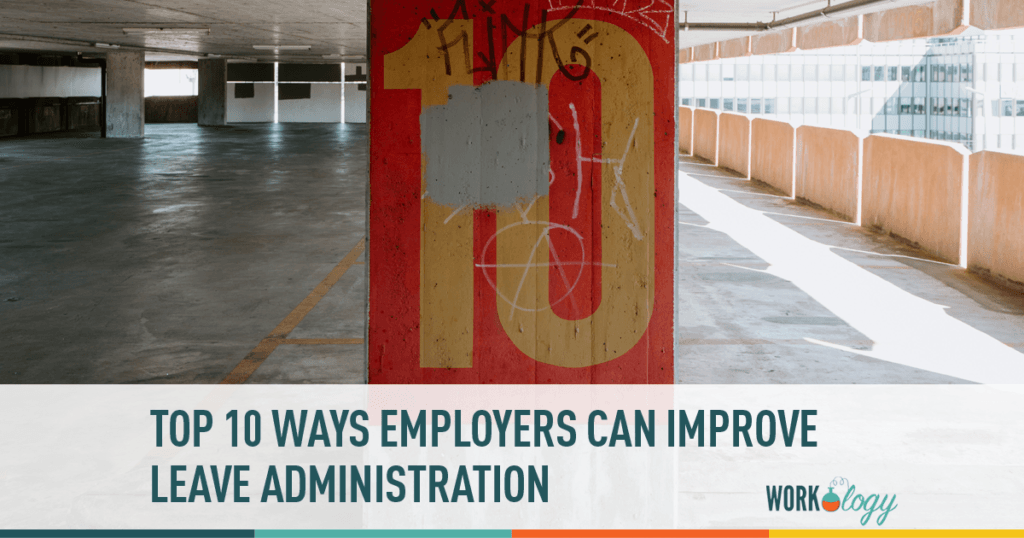Top 10 Ways Employers Can Improve Leave Administration
Over 17% of all US employees took leave for family or medical reasons in 2012. 21% of all employees eligible for FMLA leave, took job-protected leave in 2012. In each category, 55% of employees took leave for their own serious medical condition and another 21% took leave due to medical conditions relating to pregnancy and childbirth.
When 17% of all US employees do anything, that’s a huge number of employees. When you factor in required FMLA administrative requirements, that’s a huge burden for employers.
Here’s the kicker: The number of lawsuits alleging violation of FMLA administrative procedures, and discrimination or retaliation due to taking job protected leave has tripled in 2 years! Government statistics relating to labor, health and welfare and aging, predict that those numbers will only increase as boomers reach the end of their work-life and, more significantly, our middle aged workforce takes time off to care for their aging parents or other family members.
HR Today is hosting an online class covering the basics of leave administration on November 5, 2014. Click here to register. The 90-minute class will cover federal and California law that controls protected job leave, as well as how to engage in best and legally compliant leave practices. HR Today’s online classroom will provide samples and templates, and offer plenty of time to answer participants’ questions.
As a taste of things to come, here are the top 10 ways an employer can improve its leave administration and avoid being swept up in the coming tide of litigation over protected job leave.
10. Have and communicate FMLA policies and rules to your employees.
9. Include a plain-language written leave policy in your employee handbook.
8. Make sure your employees know whether you have adopted a “rolling annual cycle” or “calendar year” method for determining eligibility for protected leave.
7. Create a legally compliant process for requesting, granting, denying, tracking and certifying leave and the employee’s return to work.
6. Constantly train and remind first responders (Supervisors, Managers, and Leads) to spot leave issues and how to properly respond to and handle leave requests.
5. Train everyone on keeping medical leave information private and confidential.
4. Make sure your form for obtaining the Certification from a Healthcare Provider complies with federal and your state’s laws. They can be different and frequently are.
3. Remember, exhaustion of protected leave under FMLA is not necessary the end of a leave. Additional leave can be a “reasonable accommodation” for an employee with a disability.
2. Document everything in case of later dispute. Do so in a timely and kind manner. Write kind. Talk kind. It will be reflected back at you by a jury.
1. Stop, Gather Information and Think before you Act! Analyze every adverse action contemplated against an employee how has sought, taken or returned from a job protected leave. Is there a legitimate, non-discriminatory or non-retaliatory reason for the adverse action, and was support for the decision contemporaneously documented.









